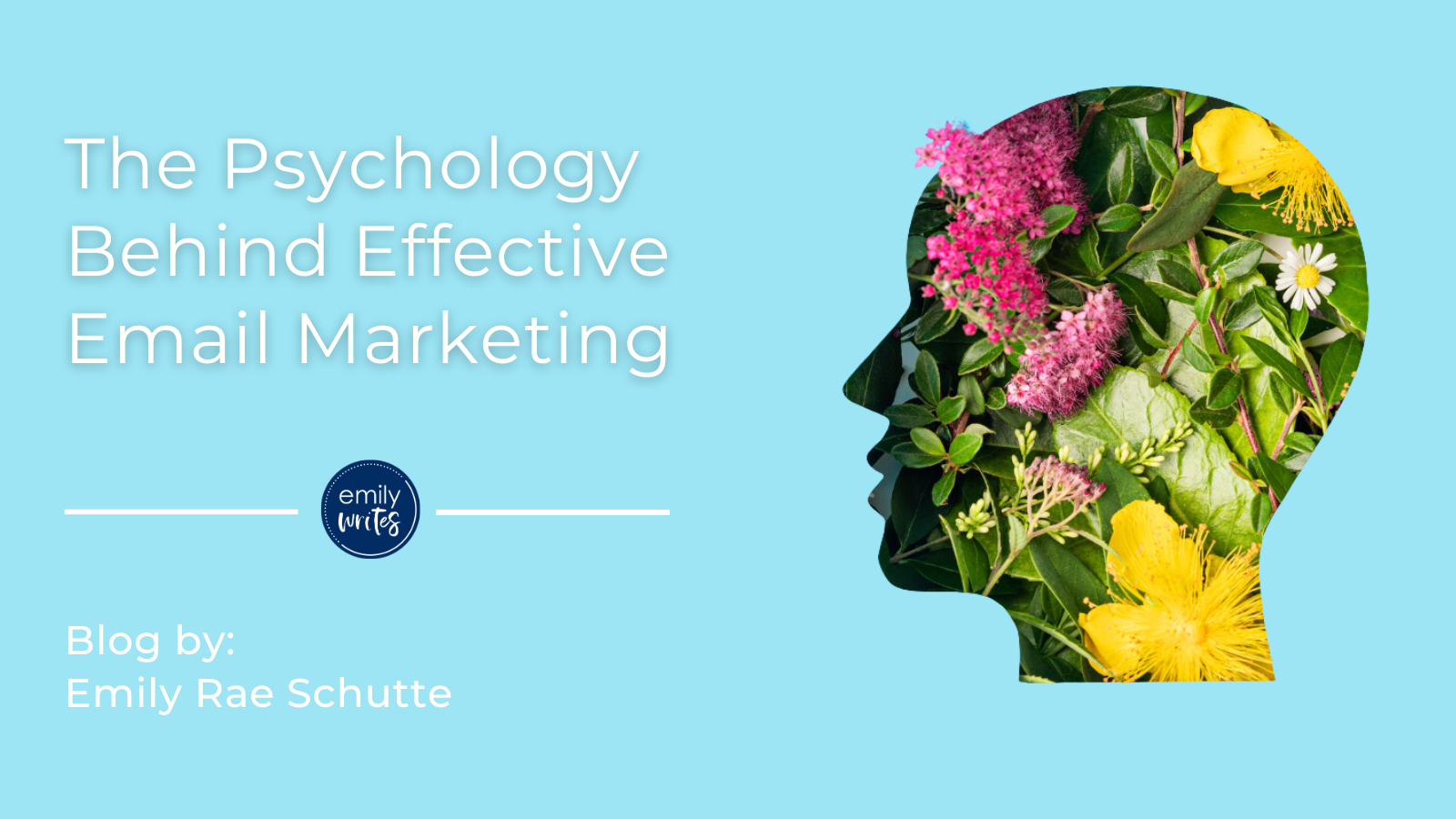As small business owners and marketers, we put a lot of work into our email marketing efforts. But crafting emails that capture attention and drive our readers to take action is tricky!
This is where marketing psychology comes into play. One of my favorite places to learn about the psychology behind great email marketing is Donald Miller’s book “Marketing Made Simple.” Pick up a copy so you can learn more about these psychology principles and Miller’s proven email marketing framework!
How to Write Emails That Work
At its heart, email marketing is about connection and persuasion. In a crowded digital landscape, you want to earn your spot in a busy person’s inbox. It takes only a second to unsubscribe – so make sure every missive is worthwhile to your audience!
Here are five psychological principles that will help you improve your email marketing efforts.
Generate Emotion
Humans still have this advantage over artificial intelligence: We are emotional creatures. Effective email marketing taps into this fact by weaving words that evoke emotions such as humor, anticipation, intrigue, and FOMO.
One of the best ways to generate genuine emotions is through stories. As Donald Miller teaches, our brains are wired to respond to stories. They help us process information, feel emotions, and remember details. Aim for authenticity, heart, and humor in your storytelling.
Keep it Simple
Too many options can overwhelm your readers and deter them from clicking your desired links. While there’s no hard-and-fast rule about the length of an email, try to make sure it’s scannable (use headings, bullets, and imagery) and includes compelling calls to action (CTAs).
For example, if you’re marketing an event, your primary CTA should be the registration button. Don’t clutter your message with unrelated offers.
Personalize Messages
All of our inboxes are overflowing! That’s why personal touches can give your business an edge. Show your readers that you understand them and their needs. While email software programs allow you to use the recipient’s name in the email body and/or subject line, that’s just the start.
Write all of your content with your ideal email recipient in mind. Who are they? What do they care about? What makes them happy? What frustrates them? When you write content that speaks directly to this person, they will see themselves in your words and feel more connected to what you’re sharing.
From a technical standpoint, you can also segment your email list so that only people with certain “tags” within your email program are receiving certain emails. For example, I have a regular email newsletter that goes out every other week, but I also have a client-only “tag” within my Flodesk. I can use this to communicate just with my clients and I can also leave clients off certain promotional emails.
As your list grows, you can tailor content to match recipient interests, past behaviors within your marketing cycle, and where they are at in the customer journey. Personalizing your content in these ways can significantly increase engagement and conversion rates.
Share Social Proof
People are inherently social creatures that look to others for cues on how to think, feel, and act. This is increasingly important in a world where trust in brands is on the decline.
Integrating social proof into your emails, such as testimonials, customer stories, or user stats, can help boost credibility and trust. Seeing that others have benefitted from your product or service reassures recipients of its value and effectiveness, nudging them closer to taking action.
Encourage Reciprocity
The principle of reciprocity is a powerful driver of human behavior. When someone receives something of value, they feel compelled to give something back.
In the context of email marketing, offering your readers something valuable (such as a free resource, a super helpful tip, a sample, etc.) can encourage them to reciprocate with their loyalty, engagement, referrals, and buying power.
Now, I’m not saying you should guilt people into buying from you! As this article explains, “You should never do it for you, do it for them. It is extremely important to give with zero expectation to receive in return. Reciprocity only works to its greatest degree when the act of giving is sincere and genuine. A favor is most likely to be returned when the initial favor is done with no expectation of repayment.”
As you refine your email marketing efforts, I’d love to be a resource for you. Please join my free email newsletter for helpful advice and bi-weekly how-tos!

